Japan, what did you do of Tadashi FUKUDA?
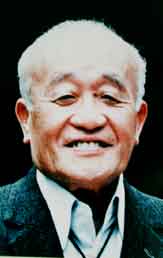
Tadashi FUKUDA at Nara in 1981
Posturology today in Japan
Pierre-Marie GAGEY
I do not understand, I cannot understand, how it can be possible that the country which produced one of the most brilliant posturologist of our time was able to drop his inheritance!. It so amazes me, almost scandalizes me, that I would want to cry:
Japan, what did you do of Tadashi FUKUDA?

Tadashi FUKUDA at Nara in 1981
And it is not recently that I am called upon this question, in 1994 already I had made the effort of publishing in a Japanese review, a paper written in Japanese (Gagey, 1994), to draw Japanese people attention on the marvellous power of the thought of their boss. Lost effort. From congresses to congresses, I always meet Japanese doctors and therapists whose thought «is caught in the limits of otoneurological theories of BARANY». The sentence is printed between quotation marks because it is from Tadashi himself. When he wrote it, in «Undô» (1957), he believed having freed minds in his country, because the sentence begins so: «In the other countries, doctors thought is caught…»
…He believed…. His emotion had been so strong when he discovered "The two phases of the labyrinthine reflex"!…. «For the first time, he wrote, I had found the wings which allowed me to fly by myself; one after one, the doors of the mystery opened, in front of which I had remained so for a long time desperately blocked» The emotion had been so strong that it must have been communicative… He thought! But, in fact, from emotion to tradition there is a long way to run.
Listen, please, to this judgment: « The two phases of the labyrinthine reflex». Not only it awakens no emotion, of course, but still it is incomprehensible, for us. While, for Tadashi, it was the magnificent casket which enclosed his prodigious discovery: the posture, the tonic postural activity is subjected to laws, knowing them is enough to become its master. And Fukuda anticipated the vast power of this tonus mastery which should widely extend beyond the domain of medicine, sport, etc. He had in his hand the key of posturology and he guessed all its power.
But today, in Japan, what became Posturology? Who takes care of postural patients?
I said "postural patients", not neurological or otoneurological patients who present postural symptoms, everybody takes care of them and that is right, but postural patients, these "functional" patients without any precise diagnosis who roam from consulting room to consulting room looking for somebody who, at least, would free them from their "lumbago" or other pains of their body axis, from their instability or other postural symptoms which have been rotting their existence, often for years. Who takes care of these postural patients, in Japan, today?
The pupils of Fukuda ?
|
Today, Manabi HINOKIAll are very interesting works. seems to me the most faithful, the most active pupil of Fukuda. He has just published a book (2003)where he resumes carefully the thought of the Boss, and perfects it with works he realized with his Kyoto's team on olfactive vertigo, neurotic vertigo, etc. But HINOKI, the title of his book testifies of that, Vertigo viewed from neurotology, HINOKI did not make the jump outside his discipline. And he is not the only one. Therefore, we could say that Fukuda's pupils locked him into neurotology. |
 |
|||
| Manabi HINOKI (1994) | ||||
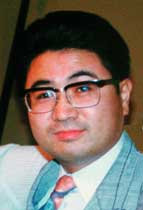
Everything happened as if it was not politically correct to take out beaten tracks of the international medicine, represented at this time by the American medicine. Excessive interpretation from me? Maybe. At least corresponding to the objective way of thinking of the nation: Japanese people follows the strongest, the winner. In 1880 it was Germany after its 1870 victory, in 1918 France, since 1945 US. A Japanese high-ranking servant pointed out it to me, it was part of his considerations when he was Prefect of Hiroshima just after the second world war. And Osamu SASAKI confirmed me this interpretation.
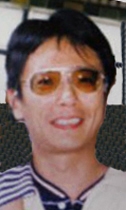 |
SASAKI came to work with us at the institute of Posturology in Paris, for one year; he was sent by his boss, the professor Kiitchiro TAGUCHI, the chief of Otoneurology's chair at Shinshu University from Matsumoto; he came to study not linear dynamic analysis of stabilometric signal. A domain in which he made a very nice work (Sasaki and al ., 2001; 2002), which occupied all his time and did not allow him to participate in the clinical consultations of the Institute. All the same he a little understood what occupied us in these consultations. Now, he is working in a ORL private hospital in Tokyo where, rather often, he confided me, he meets patients who seem being 'postural', but sending them to a posturologist is not possible for him, not because there are no posturologist in Tokyo, but because "You must not do that". A doctor cannot go against or except what is politically correct, even if he thinks that would indeed be good for his patients, it would be too much risked… For him!... |
||
Toshitaka KAKETA
So, it is by a totally new way that Posturology is resuming in Japan. No from Neurotology but from Dentistry, no in the continuation of a fundamental reflection, but through a bizarre clinical case which called upon Toshitaka KAKETA.

It was an old patient, completely deprived of teeth, crippled with rheumatism, followed for years at the Orthopaedics consultation of the university hospital for recurring, almost permanent low back pain, a big instability when walking and, of course, affected by a presbyopia, normal for his age. Now, at the end of the total reconstruction of his manducateur apparatus by implants, the professor KAKETA had the surprise to notice that this patient could again read his newspaper without glasses, suffered no more from low back pain and trotted like a rabbit!. Not long after this story, KAKETA was at the hospital Lariboisière in Paris, to see his friend and boss in implantology, the Professor Raphaël CHERCHEVE (1996).
KAKETA tells him the story of his patient, CHERCHEVE advises him to discuss the matter with professor Georges FREYSS, the chief, at that time, of the Parisian chair of Neurotology, who sent KAKETA to Posturology institute. Since then, the professor KAKETA did not stop revealing the knowledge of Posturology, first at the University Tohoku of Sendai, then in national congress where he had the professor NAHMANI make a lecture, even he published, in 2004, a Japanese translation of NAHMANI's book (1990). Now, NAHMANI used quite a lot FUKUDA's stepping test and taught his pupils to do so, even he proposed a small variant ( 2003 ) of the test. It is so that the postural way of thinking from FUKUDA came back in Japan thanks to a French - Japanese collaboration between two dentists. This return of Fukuda way of thinking in Japan was made also by other ways, as those of YOSHIDA and of TOMINAGA.

Meersseman's manœuvre presented to the pupils of the Sendai College of Dental Hygiene (Document supplied by the professor Hideo SASAKI from Sendai Tohoku University)
Minoru YOSHIDA
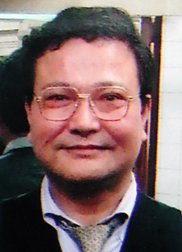 |
|||
|
When he was 17 years old, in a traffic accident, Minoru YOSHIDA, was victim of a minor closed head injury which allowed him to notice that the doctors formed in the western methods did not know how to cure head injury sequellae. As, on the other hand, he had been improved by oriental manual techniques, he decided to study these techniques of acupuncture, moxa, acupressure, massage, osseous locations, which he put into practice during 8 years in a service of orthopaedic surgery and traumatology. At this time he got acquainted with western medicine and frequented North American chiropractors. |
|||
 |
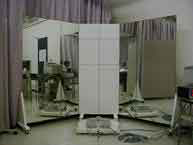 |
 |
||||||||||
| A force platform and a Barré's vertical line with a set of mirrors allowing the simultaneous vision: face, back and profile. Figure extracted from YOSHIDA's Web site (http://www.science-cure.com/) |
Each foot of the subject is placed on four force platforms which measure the reactions forces in each of these quadrans. Figure extracted from YOSHIDA's Web site (http://www.science-cure.com/) |
|||||||||||
 |
||||||||||||
| Examining the patient in reference to the gravity line. Figure extracted from YOSHIDA's Web site (http://www.science-cure.com/) |
||||||||||||
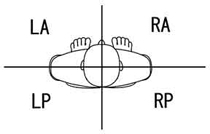 |
||||||||||||
 |
||||||||||||
| The subject changes his posture every 15 seconds during the recording. Figure extracted from the article Cranial therapy and occlusal contact (Yoshida, 2004) |
||||||||||||
| Examining the distribution of the forces from the point of view of the support basis. Yoshida examines this distribution on eight support and expresses it in percentage of the resultant force. Figure extracted from YOSHIDA's Web site (http://www.science-cure.com/) |
||||||||||||
Masashi TOMINAGA
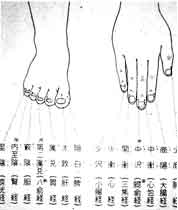 |
 |
Dentist, active member of the Japanese Academy for occlusion and Health, since his foundation by KAKETA in 1993, the Dr TOMINAGA, noticed the relations which exist between malocclusion and malposition of the atlas, with all their postural consequences, thanks to the theorem of GUZAY's quadrants (1976; 1977 a & b). That is why, firstly, TOMINAGA studied rigorously radiological exam techniques for the vertebro-occipital hinge and he directed his treatments from these radiological data. Then, he noticed that exist also a relation between malocclusion, malposition of the atlas and bad distribution of the Yin-Yan energy on the body meridians. |
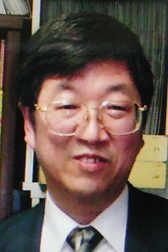 |
||||
| Distribution of the vital energy Yin and Yan on the meridians of a subject measured with the AMI system. Places of electrodes to measure the vital energy of the subject. And diagram result . ( Document extracted from A.M.I. Apparatus for measuring the functions of meridians and corresponding internal organs. Mr Tominaga) |
|||||||
| What led him to introduce into his battery of exams an instrumental measure of the stream of vital energy in order to better conduct his treatments; classical treatments of the tooth, the periodontium, the occlusal space, but also osteopathic treatments, cervical and general, and more recently Sotai. In all this Masashi TOMINAGA's history, FUKUDA's name does not appear, although Posturology is currently used. |
|||||||
This brief report of the current situation of Posturology in Japan is not the conclusion of a long, detailed, study. It reports some precise and real facts, certainly, but without any exhaustive claim. For instance, I did not interrogate recently the doctor FUKUSHIMA Hideyuki, who worked a lot the stepping test technique (Fukushima and al., 1979); he reacted to my paper in 1994, but just a bit. At this time, one would have been able to believe that he was ready to practise posturology. I registered his silence, since, as the stories of USHIO and SASAKI, without having any formal proof. However, in spite of these reserves, I think that it is not excessive saying and writing that today in Japan, Tadashi FUKUDA has not the place that would deserve a leader of a whole generation of posturologists free from the western medical way of thinking traps and proud of the Japanese intellectual dynamism which they would represent. And this observation asks questions; what is there behind this failure?
But there, I am afraid, we are going out of the domain of Posturology.
References
Chercheve R. (1996) — Implantologie de sécurité. Maloine, Paris.
Fukuda T. (1957) — Undô to Heikô no hansha seiri. Igaku Shoin, Tokyo. (Traduit en anglais en 1983: Statokinetic reflexes in equilibrium and movement. University of Tokyo Press)
Fukushima H., Yamamoto E., Morinaka S., Iwanage S., Nakanishi M., Izumikawa F., Hinoki M. (1979) — Correlation between movements of the upper limbs during stepping in relation to body equilibrium. Agressologie, 20, B, 147-148.
Gagey P.M. (1994) — In defense of clinical stabilometry according to Fukuda’s way of thinking, Equil. Res., 53, 339-345, (en japonais).
Guzay CM (1976) Introduction to the quadrant theorem. Basal Facts, 1 (4):153-60.
Guzay CM (1977, a) Quadrant theorem--part two. Basal Facts, 2, (1):19-33.
Guzay CM (1977, b) Quadrant theorem. Part III. Basal Facts, 2(4):171-83.Hinoki M. (2003) — Vertigo viewed from neurotology. Kanehara, Tokyo (en anglais)
Nahmani L. Amiel M., Casteyde J.P., Cucchi G., Dubois J.M., Hartmann F., Jacquelin L.F., Mrejen D., Servière F. (1990) — Kinésiologie; Théorie et pratique. Tome I. Comedent, Paris.
Nahmani L., Zarrinpour A., Lévy M., Thiry G., Jaïs L., Gagey P.M. (2003) — Validation du test de piétinement naturel de Nahmani (TPN) et comparaison avec le test de piétinement de Fukuda (TPF). In M. Lacour (ed.) Posture et Équilibre. Physiologie, Techniques, Pathologies. Solal, Marseille. 63-70.
Sasaki O., Gagey PM., Ouaknine AM. Martinerie J. Le Van Quyen ML., Toupet M., L'Héritier A (2001) — Nonlinear analysis of orthostatic posture in patients with vertigo or balance disorders. Neuroscience Research, 41, 2, p.185-192.
Sasaki O., Usami S-I, Gagey P.M., Martinerie J., Le Van Quyen M., Arranz P. (2002) — Role of visual input in nonlinear postural control system. Ex. Brain Res., 147:1–7
Ushio N., Hinoki M., Nakanishi K., Baron J.B. (1980) — Rôle of oculomotor proprioception in the maintenance of body equilibrium; correlation with the cervical one, Agressologie, 21, E, 143-152,.
Ushio N., Kitamura H., Matsunaga T. (1981) — Postural Reflex and Body equilibrium II, Publié par The Society of Nara Otoneurological research, imprimé par Tenri Jihosha, Tenri.
Ushio N., Kitamura H., Matsunaga T. (1984) — Postural Reflex and Body equilibrium III, Publié par Ethical Kampo, Tokyo, imprimé par Tenri Jihosha, Tenri.
Yoshida M. — (2004) Cranial therapy and occlusal contact. J. Japanese Academy of Occlusion and Health. 10, 2, 53-60